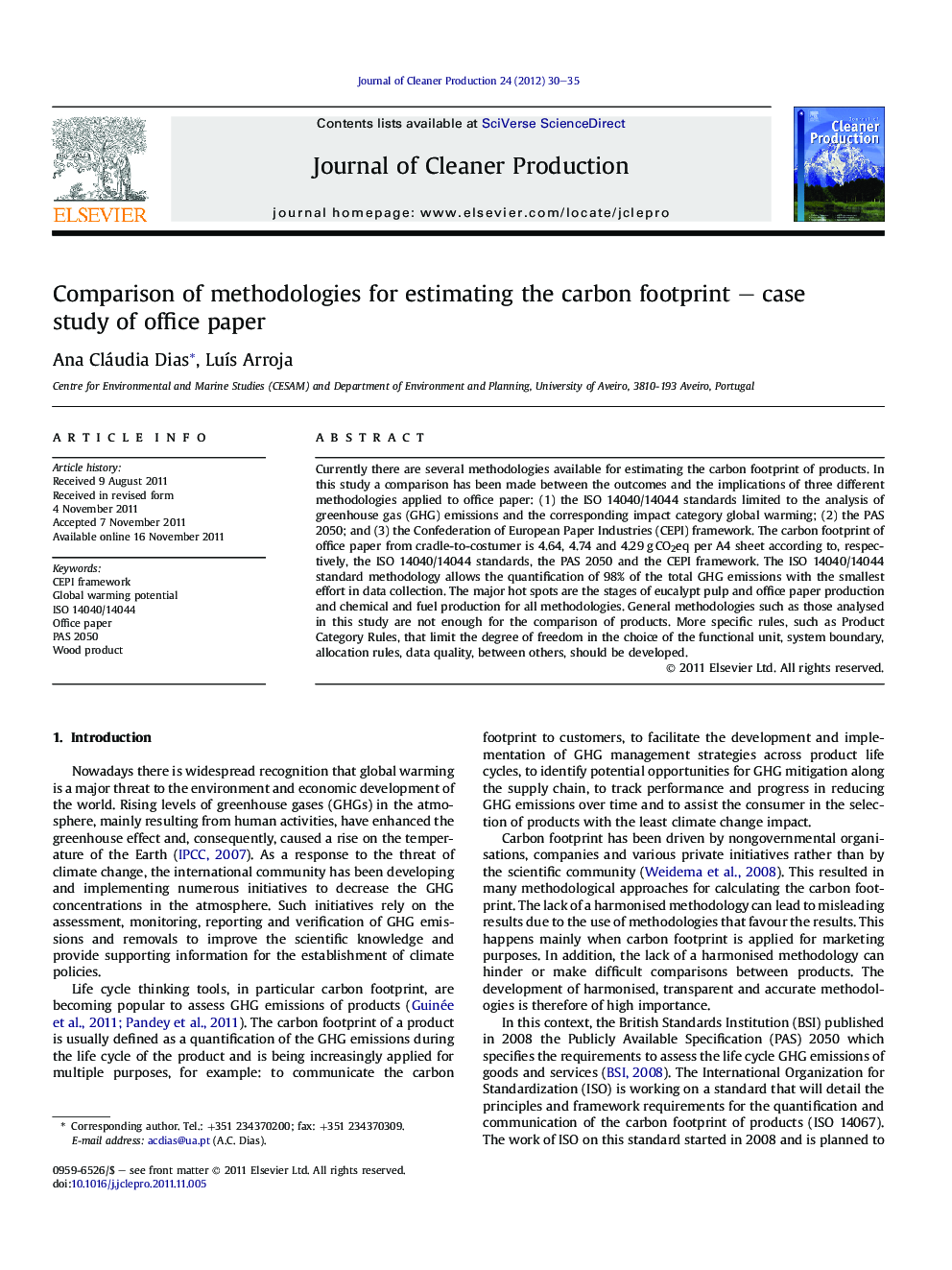| Article ID | Journal | Published Year | Pages | File Type |
|---|---|---|---|---|
| 1745828 | Journal of Cleaner Production | 2012 | 6 Pages |
Currently there are several methodologies available for estimating the carbon footprint of products. In this study a comparison has been made between the outcomes and the implications of three different methodologies applied to office paper: (1) the ISO 14040/14044 standards limited to the analysis of greenhouse gas (GHG) emissions and the corresponding impact category global warming; (2) the PAS 2050; and (3) the Confederation of European Paper Industries (CEPI) framework. The carbon footprint of office paper from cradle-to-costumer is 4.64, 4.74 and 4.29 g CO2eq per A4 sheet according to, respectively, the ISO 14040/14044 standards, the PAS 2050 and the CEPI framework. The ISO 14040/14044 standard methodology allows the quantification of 98% of the total GHG emissions with the smallest effort in data collection. The major hot spots are the stages of eucalypt pulp and office paper production and chemical and fuel production for all methodologies. General methodologies such as those analysed in this study are not enough for the comparison of products. More specific rules, such as Product Category Rules, that limit the degree of freedom in the choice of the functional unit, system boundary, allocation rules, data quality, between others, should be developed.
► Comparison of carbon footprint calculation methodologies applied to office paper. ► Cradle-to-costumer study. ► The carbon footprint of one A4 sheet of office paper ranges from 4.29 to 4.74 g CO2eq. ► General methodologies are not enough for the comparison of products. ► More specific rules, such as Product Category Rules, should be developed.
